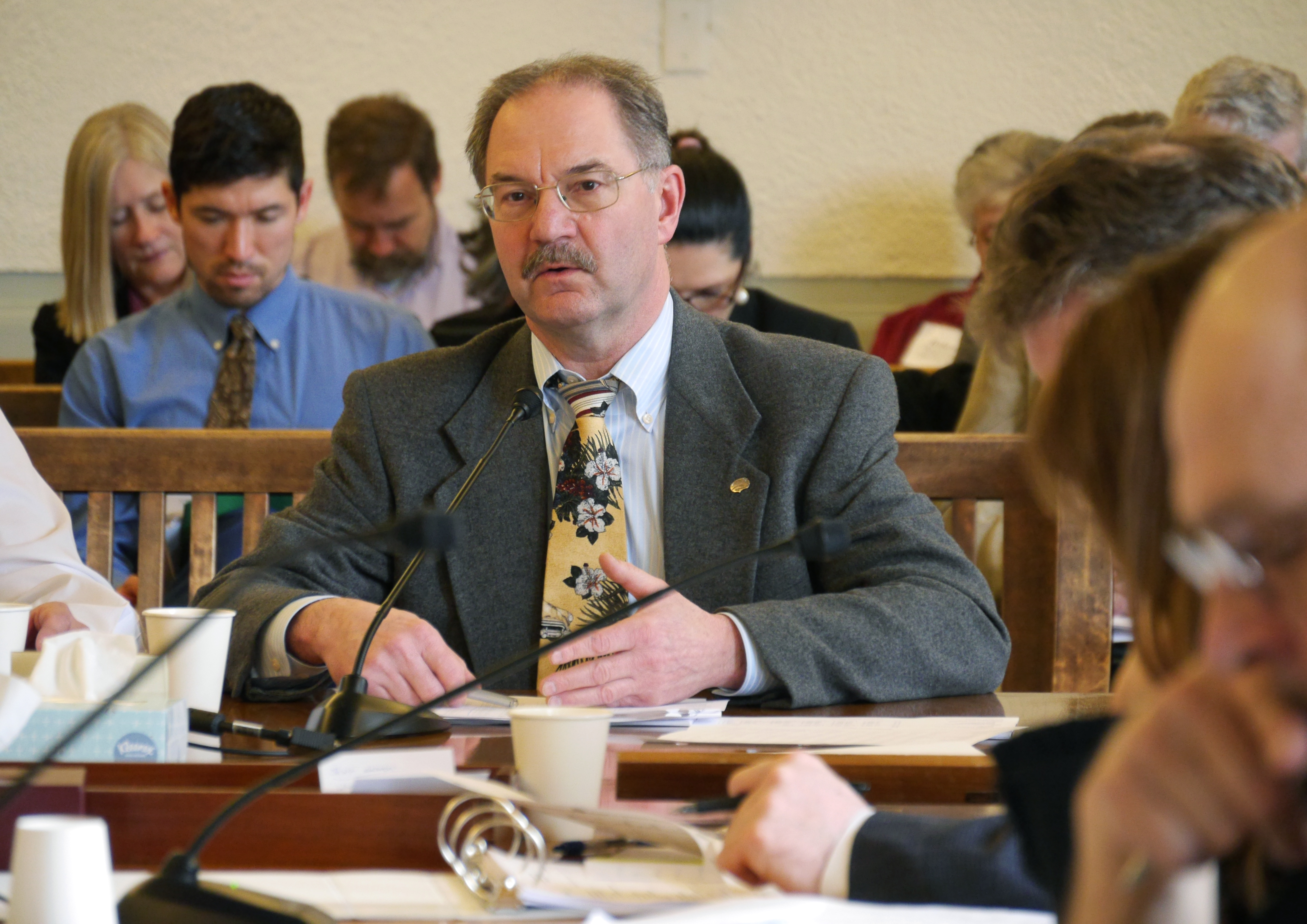
Imagine having a to-do list so complicated, so meticulous that you need an Excel spreadsheet to keep track of it.
That’s what Division of Legislative Finance budget coordinator Amanda Ryder and her boss, director David Teal, pulled up out of the sea of open tabs on Teal’s computer to talk about their process of reviewing Gov. Michael Dunleavy’s newest budget.
Ryder pointed at the list. “David can you scroll down so we can get … I would look at line 18. This is something. It’s a technical (change).”
When her office got the governor’s budget on Dec. 15, one of the half-dozen eagle-eyed analysts in the office found language in the fire and safety section that had the wrong fiscal year in it.
Ryder pushed some papers aside on Teal’s desk and pulled up an annotated copy of Dunleavy’s newest budget.
“Going to public safety,” Teal said as she flipped through a few pages. “Yeah, this year. Public safety, fire and life safety … That has not been corrected.”
When Dunleavy’s budget came out, a lot of people in the state Capitol retreated to their offices to read through it. They were looking for trends. What made it in? What got cut? How exactly does the state balance its budget? And while those reports are trickling out about the obvious changes — cuts to education, Medicaid and the marine highway system — a lot of people are waiting for a deeper analysis.
Ryder, Teal and the fiscal analysts are tackling a portion of the massive database that the Office of Management and Budget, or OMB, transferred to Legislative Finance: tens of thousands of entries — each with its own budget code and many with explanations about what the governor’s administration wants to accomplish with its budget.
They’re checking to see if the numbers match up, if the language is correct. They’re flagging research they may need to do once lawmakers start asking questions about how the new budget could affect the state. And they’re trying to do it fast. Because the state Legislature is waiting for them to translate that new budget into something lawmakers can use.
Typically, this process would be done by now. The governor is required to release a budget by mid-December, and Legislative Finance has about a month to get through this before lawmakers come into session.
But that didn’t happen this year. The version of the budget they got in December, it turns out, was something of a placeholder. Dunleavy’s administration warned that it would be putting out a new one in February — after the session started. This one is a little different.
“We haven’t had a balanced budget in years,” Teal said.
In order to balance what the state spends with what it makes, this budget has deep cuts to things like Medicaid and the university system. It also proposes eliminating a wide range of programs, like Alaska Grown, the senior benefits program and funding for the Ocean Ranger program.
These are all things that are likely to cause debate in the Legislature this session. So lawmakers need that budget sooner rather than later.
Teal and Ryder said their division is getting through it faster than usual.
One big reason for that? They didn’t have to spend nearly as much time cleaning up the language in the budget that OMB sent over.
“We ask OMB, year after year, to please use the budget that passed as the starting point for next year,” Teal said. “They continually use the budget they submitted, and so we make the same language changes year after year after year. They’re nonsense. It’s putting a semicolon here and an ‘an’ there.”
This year? After more than 20 years of asking, Teal and Ryder said they finally got it their way and it’s saved them hours of tedious editing.
The first reports could be posted as soon as Friday evening.
Rashah McChesney is a photojournalist turned radio journalist who has been telling stories in Alaska since 2012. Before joining Alaska's Energy Desk , she worked at Kenai's Peninsula Clarion and the Juneau bureau of the Associated Press. She is a graduate of Iowa State University's Greenlee Journalism School and has worked in public television, newspapers and now radio, all in the quest to become the Swiss Army knife of storytellers.




